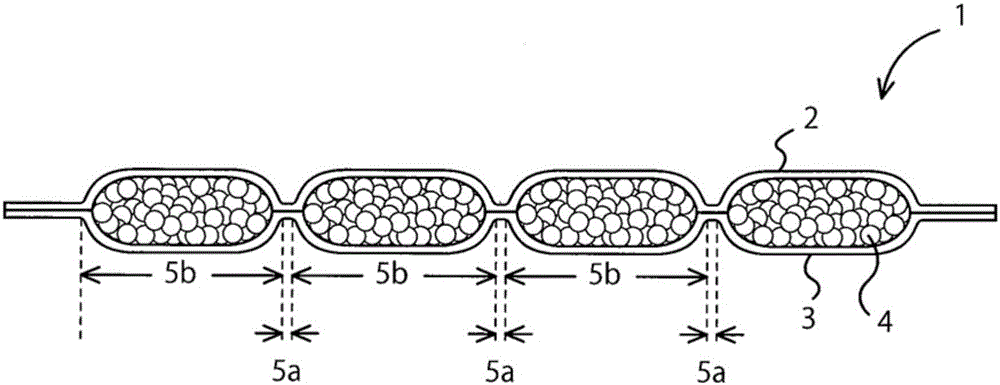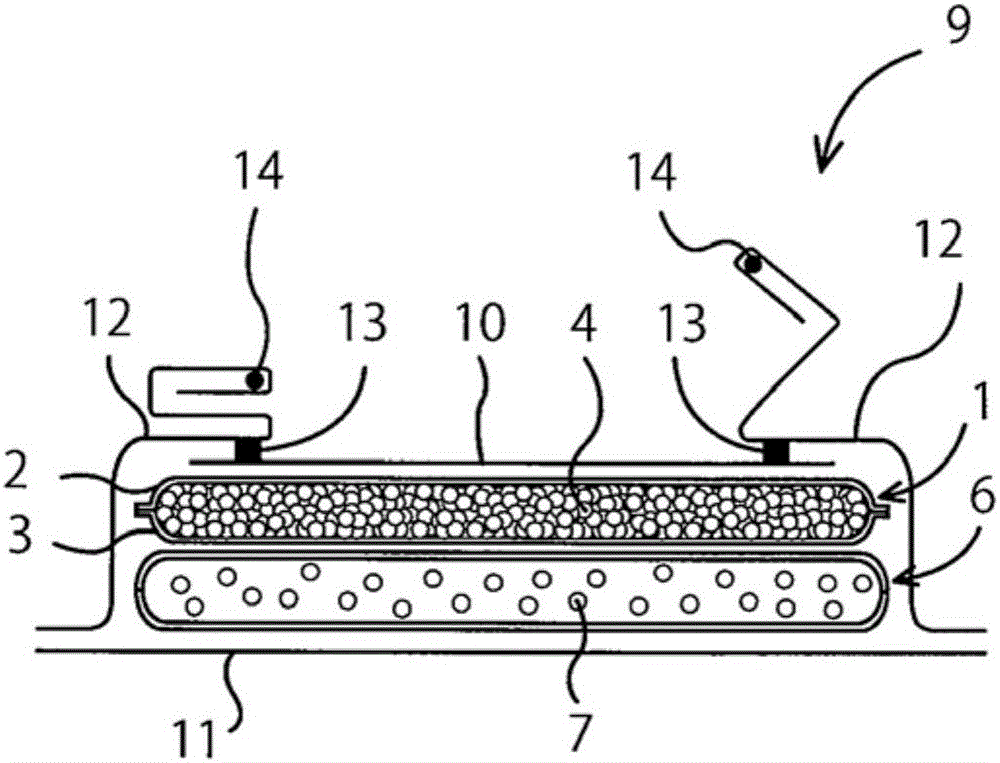Water-absorbent resin powder, absorbent body and absorbent article using the water-absorbent resin powder
A resin powder and absorber technology, which is applied in the directions of absorbent pads, solid adsorbent liquid separation, chemical instruments and methods, etc., can solve the problems of easy mutual contact, occlusion, and the inability of the absorber to exert its absorption capacity, and achieves difficult backflow and absorption. The effect of fast speed and low absorption speed
- Summary
- Abstract
- Description
- Claims
- Application Information
AI Technical Summary
Problems solved by technology
Method used
Image
Examples
Embodiment
[0164] The present invention will be described in detail through the following examples, but the present invention is not limited by the following examples, and changes and implementations within the scope of the gist of the present invention are all included in the scope of the present invention.
[0165] [Evaluation method]
[0166] (Measuring method of bulk density)
[0167] The bulk density was measured in accordance with JIS K6219-22005. The water-absorbent resin powder as a sample was injected into the center of a cylindrical container (a stainless steel container with a diameter of 100 mm and a volume of 1000 ml) of known mass and volume from a height of 50 mm or less from the lower end of the container. At this time, a sufficient amount of sample is injected into the cylindrical container so that the injected sample forms a triangular cone above the upper end of the cylindrical container. Then, use a scraper to scrape off the excess sample above the upper end of the ...
Synthetic example 1
[0188] 155 parts by mass (2.15 parts by mole) of a water-soluble ethylenically unsaturated monomer (a1-1) {acrylic acid, manufactured by Mitsubishi Chemical Corporation, purity 100%}, 0.6225 parts by mass (0.0024 parts by mole) of an internal crosslinking agent (b1) {Pentaerythritol triallyl ether, manufactured by Daiso Co., Ltd.} and 340.27 parts by mass of deionized water were kept at 1°C while stirring and mixing. Nitrogen gas is introduced into the mixture to reduce the amount of dissolved oxygen to below 0.1 ppm, then add and mix 0.31 parts by mass of 1% aqueous hydrogen peroxide, 1.1625 parts by mass of 1% aqueous ascorbic acid and 2.325 parts by mass of 0.5% 2, 2'-Azobis[2-methyl-N-(2-hydroxyethyl)-propionamide] aqueous solution to start polymerization. When the temperature of the mixture reaches 85°C, polymerize at 85±2°C for about 10 hours to obtain a hydrogel (1). Next, while crushing 502.27 parts by mass of the hydrogel (1) with a grinder (12VR-400K manufactured by...
Synthetic example 2
[0190] In addition to changing "dry the chopped gel (2) with an airflow type belt dryer {200 °C, wind speed 5 m / s}" to "dry the chopped gel with an air flow type belt dryer {150 °C, wind speed 5 m / s} A water-absorbent resin powder 2 was obtained in the same manner as in Synthesis Example 1 except for "crushed gel (2)".
PUM
| Property | Measurement | Unit |
|---|---|---|
| loose density | aaaaa | aaaaa |
| loose density | aaaaa | aaaaa |
| loose density | aaaaa | aaaaa |
Abstract
Description
Claims
Application Information
 Login to View More
Login to View More - R&D
- Intellectual Property
- Life Sciences
- Materials
- Tech Scout
- Unparalleled Data Quality
- Higher Quality Content
- 60% Fewer Hallucinations
Browse by: Latest US Patents, China's latest patents, Technical Efficacy Thesaurus, Application Domain, Technology Topic, Popular Technical Reports.
© 2025 PatSnap. All rights reserved.Legal|Privacy policy|Modern Slavery Act Transparency Statement|Sitemap|About US| Contact US: help@patsnap.com



